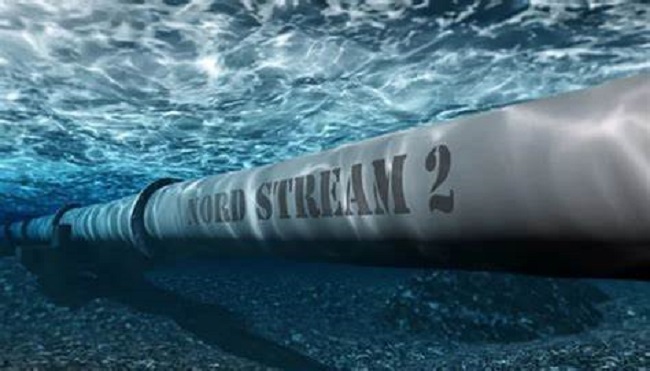The rupture of Europe’s Nord Stream gas pipelines more than two years ago resulted in the planet’s largest human-caused release of methane, a powerful greenhouse gas, finds a new study coordinated by the United Nations Environment Programme (UNEP).

Up to 485,000 tonnes of methane seeped from the pipeline network following a series of explosions under the Baltic Sea in September of 2022. That was more than twice as much as previously thought, the study revealed.
The Nord Stream leak was already viewed as one of the largest human-caused methane releases in history. But the new UNEP analysis, published in the journal Nature, reveals for the first time its true scope.
The leak was nearly five times larger than the world’s previous record holder, a release from the Aliso Canyon natural gas storage facility in the United States. Over the short-term, the Nord Stream leak contributed as much to global warming as would have 8 million cars driven for a year, experts say.
“This release was extraordinary in its magnitude but it’s just the tip of the iceberg,” said Manfredi Caltagirone, the head of the UNEP-led International Methane Emissions Observatory, which provides data on methane emissions. “Despite their massive size, the Nord Stream explosions represented just two days’ worth of the global oil and gas industry’s methane emissions. There is an enormous opportunity to address this pollution, which is supercharging the climate crisis.”
Methane, often a byproduct of oil and gas production, causes about one-third of global warming. While it only exists in the atmosphere for about a decade, it is over 80 times more effective at trapping heat than the world’s most common greenhouse gas, carbon dioxide.
Previous studies pegged the Nord Stream leak at anywhere from 75,000 to 230,000 tonnes. The UNEP analysis, coordinated by the International Methane Emissions Observatory, drew on new information to offer a more comprehensive look at the disaster. Researchers used atmospheric data, satellite-based images and marine observations, aerial measurements and engineering estimates to gauge how much methane dissolved into the Baltic Sea and then escaped into the atmosphere.
The analysis included the only on-site airborne measurements collected from the explosions, which were gathered by the German Aerospace Centre and Technische Universität Braunschweig, in Germany.
Nearly 70 scientists from 30 research organizations participated in the study. They concluded the “plausible range” of the Nord Stream leak was anywhere from 445,000 to 485,000 tonnes.
“The observatory’s work showcases that using different observation and estimation tools is essential to enabling the assessment of the magnitude of emissions, a first step towards prioritizing actions to reduce methane emissions,” said Andrea Hinwood, UNEP’s Chief Scientist.
The Nord Stream study is part of a larger UNEP effort to help the world understand and rein in methane emissions. Another part of that push is the Methane Alert and Response System, which uses satellite-based data to chart major methane releases from oil and gas installations. The system then notifies governments and companies about leaks, allowing them to respond.
In addition to this alert system, UNEP’s Oil and Gas Methane Partnership 2.0 helps oil and gas companies measure and report their emissions. This is considered essential to managing the sector’s emissions in a systemic way and directing resources where they can have the greatest climate impact.
Methane emissions are rising faster than at any time since the 1980s. The Intergovernmental Panel on Climate Change has called on countries to cut releases by at least 30 per cent by 2030 to keep alive the Paris agreement goal of limiting the Earth’s temperature rise to 1.5°C above pre-industrial levels.
The silver lining: because methane is relatively short lived, slashing emissions can have a rapid impact on global warming, said Caltagirone.
“The Nord Stream explosions remind us of the immediate climate opportunity represented by reducing methane emissions across the oil and gas industry.”
